
IUCN Red List India | Red Data List | Red Book Part-1
Subscribe to Never Miss an Important Update! Assured Discounts on New Products!
Must Join PMF IAS Telegram Channel & PMF IAS History Telegram Channel
Last updated on April 25, 2024 6:45 PM
International Union for Conservation of Nature
- (IUCN) is an international organization (NGO) working in the field of nature conservation and sustainable use of natural resources.
- It is involved in data gathering and analysis, research, field projects, advocacy, lobbying and education.
- The organization is best known for compiling and publishing the IUCN Red List, which assesses the conservation status of species worldwide.
- Its headquarters are in Gland, Switzerland.
IUCN Red List or Red Data List or Red Book
- The IUCN Red List of Threatened Species, founded in 1964, is the world’s most comprehensive inventory of the global conservation status of biological species.
- When discussing the IUCN Red List, the official term “threatened” is a grouping of three categories: Critically Endangered, Endangered, and Vulnerable.

- The pink pages in this publication include the critically endangered species.
- As the status of the species changes, new pages are sent to the subscribers.
- Green pages are used for those species that were formerly endangered but have now recovered to a point where they are no longer threatened.
- With passing time, the number of pink pages continue to increase.
Species are classified by the IUCN Red List into nine groups

Nine Groups in IUCN Red List (Source)

Nine Groups in IUCN Red List (Source)
- Extinct (EX) No known individuals remaining.
- Extinct in the wild (EW) Known only to survive in captivity, or as a naturalized population outside its historic range.
- Critically endangered (CR) Extremely high risk of extinction in the wild.
- reduction in population (greater than 90% over the last 10 years),
- population size (number less than 50 mature individuals),
- quantitative analysis showing the probability of extinction in wild in at least 50% in their 10 years, and
- it is therefore considered to be facing an extremely high risk of extinction in the wild.
- Endangered (EN) High risk of extinction in the wild.
- Vulnerable (VU) High risk of endangerment in the wild.
- Near threatened (NT) Likely to become endangered in the near future.
- Least concern (LC) Lowest risk. Does not qualify for a more at-risk category. Widespread and abundant taxa are included in this category.
- Data deficient (DD) Not enough data to assess its risk of extinction.
- Not evaluated (NE) Has not yet been evaluated against the criteria.
Q. The ‘Red Data Books’ published by the International Union for Conservation of Nature and Natural Resources (IUCN) contain lists of
- Endemic plant and animal species present in the biodiversity hotspots.
- Threatened plant and animal species.
- Protected sites for conservation of nature & natural resources in various countries.
Which of the statement given above is/are correct?
- 1 & 3
- 2 only
- 2 & 3
- 3 only
- IUCN is an NGO. It publishes Red data book which contains a list of ‘Threatened species’ (vulnerable, endangered and critically endangered).
Answer: b) 2 only
BirdLife International
- BirdLife International is the world’s largest nature conservation partnership.
- Together they are 120 BirdLife Partners worldwide.
- BirdLife International strives to conserve birds, their habitats and global biodiversity, working with people towards sustainability in the use of natural resources.
- BirdLife International is the official Red List authority for birds, for the International Union for Conservation of Nature.
- It identifies the sites known/referred to as ‘Important Bird and Biodiversity Areas’.
With reference to an organization known as ‘Birdlife International’ which of the following statements is/are correct?
- It is a Global Partnership of Conservation Organizations.
- The concept of ‘biodiversity hotspots’ originated from this organization.
- It identifies the sites known/referred to as ‘Important Bird and Biodiversity Areas’.
Select the correct answer using the code given below.
- 1 only
- 2 and 3 only
- 1 and 3 only
- 1, 2 and 3
- BirdLife International has nothing to do with the concept “biodiversity hotspots”.
Answer: c) 1 and 3 only
IUCN Red List India (As of March 2019)
- The list contains critically endangered, endangered and vulnerable species.
- The list is updated by Zoological Survey of India (ZSI) from time to time as per the International Union for Conservation of Nature (IUCN), 1996.
‘Critically Endangered’ Mammals
Himalayan Brown/Red Bear (Ursus arctos isabellinus)
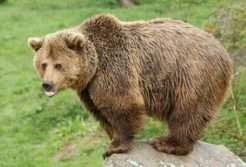
- Distribution: Nepal, Tibet, north India, and north Pakistan.
- Threats: loss of suitable habitat and persecution by humans.
Pygmy Hog (Porcula salvania)
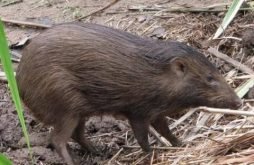
- Is the world’s smallest wild pig. This species constructs a nest throughout the year.
- It is one of the most useful indicators of the management status of grassland habitats.
- The grasslands where the pygmy hog resides are crucial for the survival of other threatened species such as Indian Rhinoceros, Swamp Deer, Wild Buffalo, Hispid Hare, Bengal Florican and Swamp Francolin.
- Habitat: Relatively undisturbed, tall terai grasslands.
- Distribution: Previously spread across India, Nepal, and Bhutan. Now only found in Assam (Manas Wildlife Sanctuary and its buffer reserves).
- Pygmy hog-sucking Louse (Haematopinus oliveri), a parasite that feeds only on Pygmy Hogs will also fall in the same risk category of critically endangered as its survival is linked to that of the host species.
- Threats: The main threats are loss and degradation of grasslands, dry-season burning, livestock grazing and afforestation of grasslands. Hunting is also a threat.
Andaman White-toothed Shrew (Crocidura andamanensis)

- Distribution: It is endemic to the South Andaman Island of India.
- They are usually active by twilight or in the night.
- Threats: Habitat loss due to selective logging, natural disasters such as tsunami and drastic weather change are thought to contribute to current population declines.
Kondana Rat (Millardia kondana)

- Distribution: Known only from the small Sinhagarh Plateau (about one km2), near Pune in Maharashtra.
- It is a nocturnal burrowing rodent that is found only in India.
- Habitat: Tropical and subtropical dry deciduous forests and tropical scrub.
- Threats: Major threats are habitat loss, overgrazing of vegetation and disturbance from tourism and recreational activities.
Large Rock Rat or Elvira Rat (Cremnomys elvira)
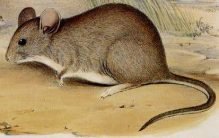
- It is a medium sized, nocturnal and burrowing rodent endemic to India.
- Habitat: Tropical dry deciduous shrub land forest, seen in rocky areas.
- Habitat/distribution: Known only from Eastern Ghats of Tamil Nadu. Recorded from an elevation of about 600 m above mean sea level.
- Threats: Major threats are habitat loss, conversion of forests and fuel wood collection.
Namdapha Flying Squirrel (Biswamoyopterus biswasi)
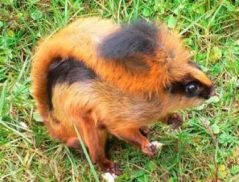
- It is a unique (the only one in its genus) flying squirrel that is restricted to a single valley in the Namdapha N.P. (or) W.L.S. in Arunachal Pradesh.
- Habitat: Tropical forest.
- Habitat/distribution: Found only in Namdapha Tiger Reserve in Arunachal Pradesh.
- Threats: Hunted for food.
Malabar Civet (Viverra civettina)
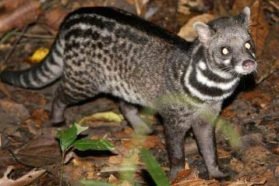
- It is endemic to India and was first reported from Travancore, Kerala.
- It is nocturnal in nature and found exclusively in the Western Ghats.
- Habitat: Wooded plains and hill slopes of evergreen rainforests.
- Habitat/distribution: Western Ghats.
- Threats: Deforestation and commercial plantations are major threats.
Sumatran Rhinoceros (Dicerorhinus sumatrensis)
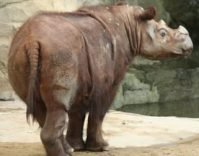
- It is the smallest and most endangered of the five rhinoceros’ species.
- It is now thought to be regionally extinct in India, though it once occurred in the foothills of the Himalayas and north-east India.
- The Javan Rhinoceros (Rhinoceros sondaicus) is also believed to be extinct in India and only a small number survive in Java and Vietnam.
- Threat: Poaching, loss of habitat.
Kashmir stag/hangul (Cervus elaphus hanglu)

- It is a subspecies of Red Deer which is native to India.
- Habitat: Dense riverine forests, high valleys, and mountains of the Kashmir valley and northern Chamba in Himachal Pradesh.
- State animal of Jammu and Kashmir.
- Threat: habitat destruction, over-grazing by domestic livestock, and poaching.
‘Endangered’ Mammals
Tigers (including Bengal Tiger)
- 2015: International Union for Conversation of Nature (IUCN), said that tiger numbers have grown to 3,890—a marked increase from estimates in 2010 that put the number at “as few as 3,200.”
- The general observation is that the population of tigers in India has increased while that of the rest of the world has decreased.
Asiatic Lion (Included Gir Lions)
- Habitat: Gir forests in Gujarat
- Threats: Habitat destruction, Diseases spreading from domestic animals.
Red Panda
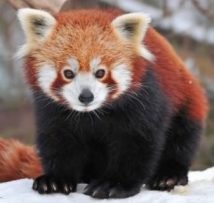
- Red panda is endemic to the temperate forests of the Himalayas.
- Habitat: Sikkim and Assam, northern Arunachal Pradesh.
- Threats: habitat loss and fragmentation, poaching, and inbreeding depression.
Dhole/Asiatic wild dog or Indian wild dog (Cuon alpinus)

- Distribution: They occur in most of India south of the Ganges, particularly in the Central Indian Highlands and the Western and Eastern Ghats of the southern states.
- In north-east India, they inhabit Arunachal Pradesh, Assam, Meghalaya, and West Bengal.
- Threats: Habitat loss, depletion of its prey base, competition from other predators, persecution and possibly diseases from domestic and feral dogs.
Eld’s deer/thamin or brow-antlered deer (Panolia eldii)
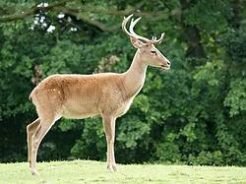
- Distribution: Keibul Lamjao National Park (KLNP), Manipur.
- Threats: Overgrazing, loss of grassland habitat.
Golden langur (Trachypithecus geei)
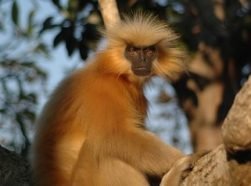
- Primate, is an Old World monkey
- Distribution: small region of western Assam and in the neighbouring foothills of the Black Mountains of Bhutan.
- Threats: Deforestation, human encroachments.
Himalayan / White-bellied Musk Deer
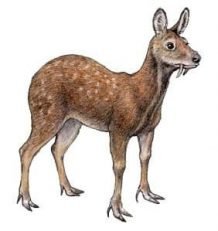
- Habitat: Kashmir, Kumaon and Sikkim.
- Threat: poaching & illegal trade for its musk. Only males produce the musk.
Hispid hare/ Assam rabbit (Caprolagus hispidus)
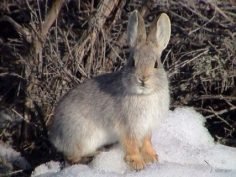
- Habitat: Southern foothills of the central Himalayas.
- Threats: The habitat of hispid hares is highly fragmented due to increasing agriculture, flood control, and human development.
Hog deer
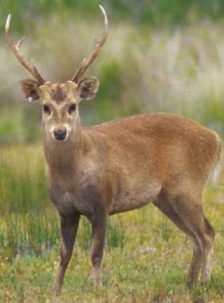
- Habitat: Terai region and grasslands in northern India.
- Threats: Hunting, habitat loss, habitat fragmentation, human encroachments.
Lion-tailed macaque/ wanderoo (Macaca silenus)
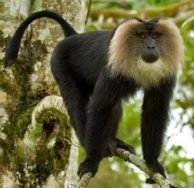
- Endemic to the Western Ghats.
- Avoids human presence and they do not live, feed or travel through plantations.
- Habitat: Evergreen forests in the Western Ghats range.
- Threat: Habitat fragmentation due to spread of agriculture and tea, coffee, teak and cinchona, construction of water reservoirs and human settlements to support such activities.
Q. In which of the following States is lion-tailed macaque found in its natural habitat?
- Tamil Nadu
- Kerala
- Karnataka
- Andhra Pradesh
Select the correct answer using the codes given below.
- 1, 2 and 3 only
- 2 only
- 1, 3 and 4 only
- 1, 2, 3 and 4
- Lion-tailed macaque is found in Western Ghats. So, AP is the odd option.
Answer: a) 1, 2 and 3 only
Nilgiri tahr
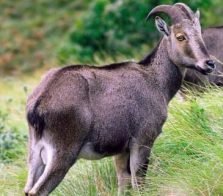
- The Nilgiri tahr is the largest of the three tahr species, inhabit montane grasslands of Western Ghats. It is the state animal of Tamil Nadu.
- Threats: Habitat loss, overgrazing, illegal hunting.
Kharai Camel – India’s swimming camels
Q. What is/are unique about ‘Kharai camel’, a breed found in India? (2016)
Select the correct answer using the code given below.
|
Last updated on April 25, 2024 6:45 PM






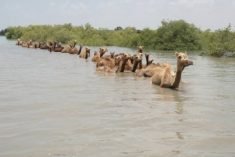
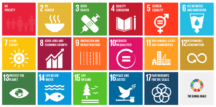
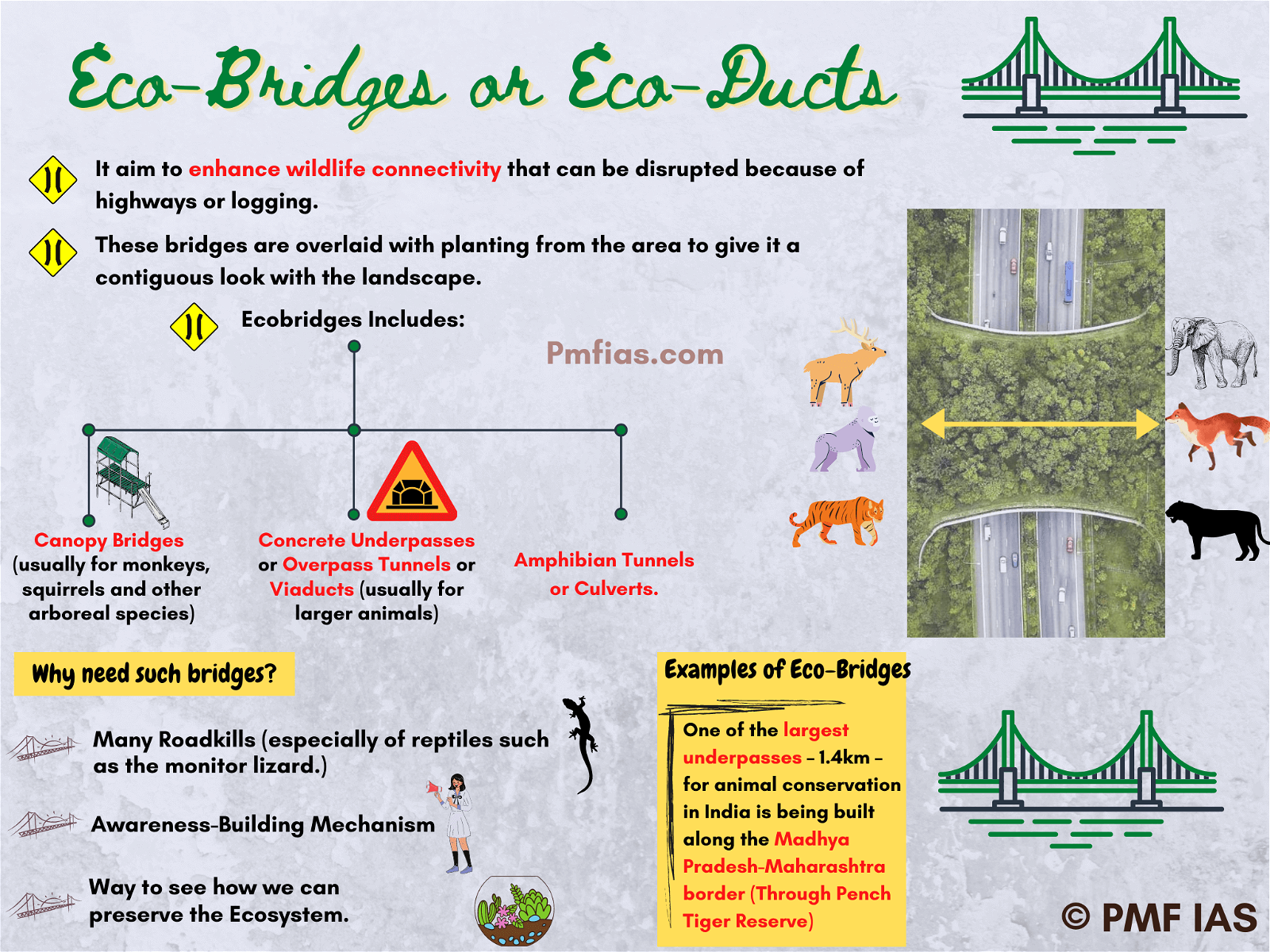
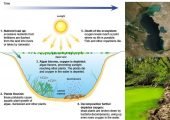
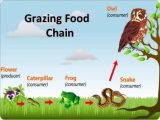


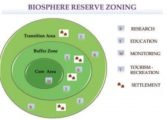
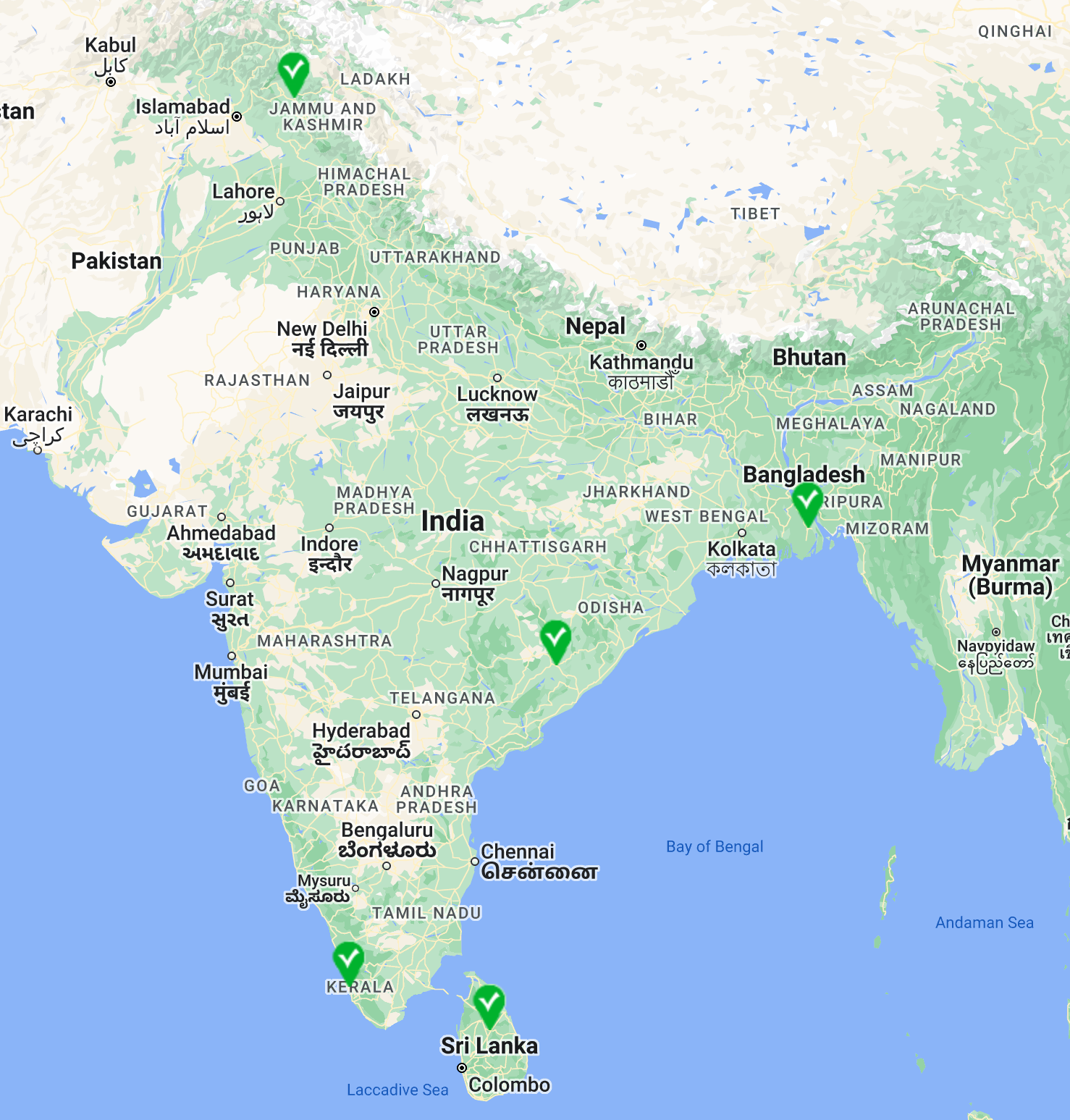
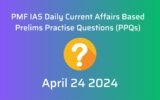



PMF I.A.S is the best website for preparatioms with simplified data and lucid interpretations.
Please update environment ecology sections.. Its of 2015 itself. .Pmfias
Will do it before Jan 2019. Not possible before prelims 2018. Sorry!
An observed, estimated, inferred or suspected reduction of at least 80% over the last 10 years or three generations, whichever is the longer,
A reduction of at least 80%, projected or suspected to be met within the next 10 years or three generations
Extent of occurrence estimated to be less than 100 km2 or area of occupancy estimated to be less than 10 km2
Population estimated to number less than 250 mature individuals and either:
1) An estimated continuing decline of at least 25% within three years or one generation, whichever is longer or
2) A continuing decline, observed, projected, or inferred, in numbers of mature individuals and population structure in the form of either:
a) severely fragmented (i.e. no subpopulation estimated to contain more than 50 mature individuals)
b) all individuals are in a single subpopulation
D) Population estimated to number less than 50 mature individuals.
E) Quantitative analysis showing the probability of extinction in the wild is at least 50% within 10 years or three generations, whichever is the longer.
But in your text book you have mentioned pyggmy hog as Endangered mammal